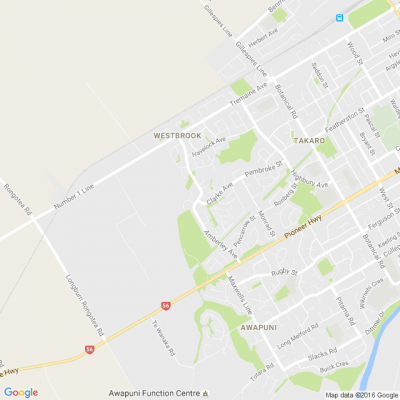
Know what’s happening
Access the private noticeboard for verified neighbours near you. Keep informed about any suspicious activity, send urgent updates to your neighbours when required and discuss emergency planning.
Get to know your neighbours
Browse the directory and start getting to know your neighbours. Don’t want to post to the whole neighbourhood? Send a private message.
Buy, sell and give away
Want to declutter your garage? Buy some used household items? Give away some garden stuff? Become a verified neighbour to browse and post items for sale. Trading is simple when everyone lives nearby.

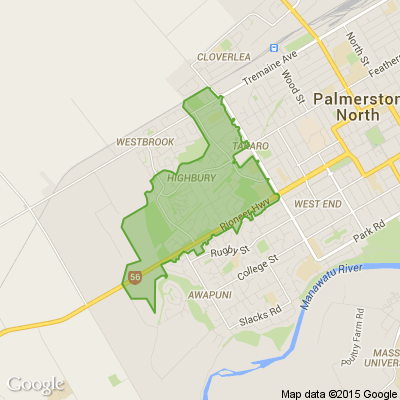
Needing new school uniform items?
Or have some to sell? Post on Neighbourly

Thank you for using Neighbourly
You may receive an email confirmation for any offer you selected. The associated companies will contact you directly to activate your requests.
Yvonne from West End
Hi there I have a washing machine new been used only 3 or 4 times needs a home Its a Haier 6.o kg Fuzzy Logic wanting 100 dollars only for it nothing wrong with it just don't need two of them Thanks

The Team from Resene ColorShop Palmerston North
Brighten up a corner of your garden with this easy-to-build bird bath and paint it in a Resene colour to suit your exterior colour palette.
Make the most of this weekend with this easy step by step project idea from Resene. Find out how to create your own
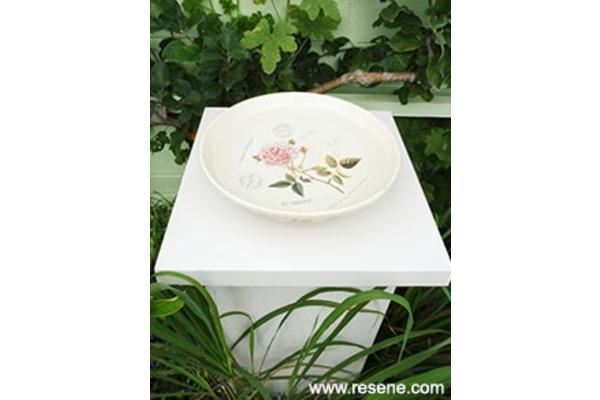
Robert Anderson from Curtain Clean Palmerston North
Animal-based fibres are wool, fur, and excretions, such as silk.
Alpaca: Alpaca is a very exclusive fibre, hollow in part of its structure, and it comes naturally in twenty-three different colours. It is extremely lightweight, has great insulation properties and is stronger than sheep’s wool. … View moreAnimal-based fibres are wool, fur, and excretions, such as silk.
Alpaca: Alpaca is a very exclusive fibre, hollow in part of its structure, and it comes naturally in twenty-three different colours. It is extremely lightweight, has great insulation properties and is stronger than sheep’s wool. Alpaca is mixed with other natural fibres such as mohair, silk, or wool to make luxurious garments of the highest quality, both in knitted and flat fabrics.
Alpaca fibres of higher quality coming from the shearing of pups and younger specimens are considered smoother, softer, and warmer than cashmere. It is currently being used to manufacture sportswear. The leading brands in sports have been seduced by this fibre due to its insulation qualities in cold weather.
Angora: Angora is a natural animal-based fibre that comes from the Angora rabbit. It is silky, thin, and soft. This “ultra-silky” white hair from the Angora rabbit is a hollow fibre classified as wool. The hair is light, with great water absorption and quick dry.
Extremely light but very warm, angora is used mainly to make woven clothes such as pullovers, vests, sweaters, and fashion accessories for winter season. Flat fabrics with angora are used to manufacture thermal garments. Angora is mixed with wool to create greater density and elasticity in the fabric, especially for the production of suits and blazers. It also used to make high-quality and luxurious garments.
Cashmere: Cashmere comes from the Kashmir goat, a native of the Himalayas.
Cashmere is a very expensive and exclusive fibre. It is extremely soft and has great thermal properties; cashmere is used to manufacture high-quality sweaters and children’s warm clothes. The well-known “pashmina” is a type of cashmere used in shawls and scarves, produced in the Kashmir Valley. More robust cashmere is employed to manufacture high-quality rugs and carpets.
Sheep wool: A limited supply and its exceptional qualities have made wool the most widely used animal-based textile fibre in the fashion and textile industry.
Wool is a fibre with curly appearance, elastic, soft to the touch, which easily absorbs moisture and has an extremely low rate of heat release. These last few characteristics make woollen garments comfortable and warm.
Wool is a fibre of multiple functions and a wide range of diameters that make it perfect for manufacturing clothing items and fashionable accessories. It is mixed with other natural and synthetic fibres to increase strength. Wool is also used in household textile products as well as in industrial developments such as thermal and acoustic insulation.
Mohair: Mohair is the hair of the Angora goat from the Tibet. It is a very shiny, insulating type of wool, softer and stronger than sheep wool. Mohair is white and dyes with exceptional ease. It has excellent absorption capacity and is mainly used to make knitted garments and crochet accessories. Mohair is also utilized in household textiles to make luxurious beddings and upholstery.
Camel hair: Obtained from Bactrian camels with two humps, it is a fine, soft fibre that is used exclusively in luxurious textiles due to its quality and small supply. To manufacture ultra-exclusive items, camel hair is mixed with cashmere and, in other cases, due to its high cost, it is combined with wool to reduce the final price tag of the garment.
This fibre is employed to manufacture a wide variety of clothing items –suits, coats, sweaters, and jackets—and other accessories for winter season such as gloves, hats, and scarves.
Silk: In many people’s eyes, silk is still “the queen of fabrics”.
Silk is a protein filament produced by the silkworm. Feeding on mulberry leaves, the worm produces liquid silk that once solidified forms the filaments to build its cocoon. Then, once the larva is dead, heat is used to soften the hardened filaments and to unroll them. These individual filaments are later intertwined into one single filament to form the silk yarn.
Silk is a lightweight, lustrous, and soft fibre. It is highly resistant to tensile strength with little or no elasticity. Silk is very glossy because of the triangular prism structure of the fibre and this causes garments made of this fabric to refract incoming light into different angles.
Naturally, silk is used in high-quality textile industry to produce exquisite accessories as well as luxurious, haute couture garments. Additionally, it is utilized in a wide range of home décor items.
Thanks for all of your entries in our Father's Day giveaway! It was great to see all the love that Dads were getting across the nation.
It was a very difficult decision, but we want to say a massive congratulations to Elvi from Eden Terrace who took out the competition!
Don't worry … View moreThanks for all of your entries in our Father's Day giveaway! It was great to see all the love that Dads were getting across the nation.
It was a very difficult decision, but we want to say a massive congratulations to Elvi from Eden Terrace who took out the competition!
Don't worry if you missed out, there's plenty more where that came from. Keep your eyes peeled for our next giveaway.

Exceed - we fix windows and doors
Whether you’re deciding to list your home, taking on a fixer-upper, or even wanting to do a few windows and door repairs, Exceed specialists can find the best solution for you
🔨🏠
At Exceed we fix windows & doors, we suggest repairing the originals instead of replacing. By carefully … View moreWhether you’re deciding to list your home, taking on a fixer-upper, or even wanting to do a few windows and door repairs, Exceed specialists can find the best solution for you
🔨🏠
At Exceed we fix windows & doors, we suggest repairing the originals instead of replacing. By carefully assessing the damage, using our many skills and proven techniques, we are able to repair or replace all components on all brands and ages of aluminium and timber windows including window handles, hinges, stays, security latches, locks and window rubbers – ultimately making your window seem brand new🙌
🚐 Call our Taranaki team today!
Every time you book a visit with us you support a Kiwi business and family. Buy local to support locals 💙💛 🇳🇿

Jo McCarroll Reporter from NZ Gardener
We're giving away 100 Vegepods. To enter purchase the September issue of NZ Gardener, find the code and enter it online at Stuff.co.nz/vegepod Find out more

Tony from Rongotea - Awahuri
Just read the article on the front page of the Herald. Wow what a shocking waste of Rate payers money. Why are we gifting money to a Professional sport?? Why are we gifting $75,000 to Manfield to run 2 Rugby games?? Why is Manfield getting $75.000 to create a new Rugby ground for 2 games?? When you… View moreJust read the article on the front page of the Herald. Wow what a shocking waste of Rate payers money. Why are we gifting money to a Professional sport?? Why are we gifting $75,000 to Manfield to run 2 Rugby games?? Why is Manfield getting $75.000 to create a new Rugby ground for 2 games?? When you look at it from afar; Rugby at Representative level has always bee based and run in Palmerston North. Why move when there is no need??? Rugby and Stockcars have happily co egsisted for years in Palmerston North. If movement is absolutely necessary then take it to Rongotia. Easily could cater for these events??
Has a grandstand?? Pub next door with great food?? That's Grassroots isn't it?? As a Rate Payer this smells of under handed back room deals. Rugby union is a business and a very poorly and over funded one at that. Manfield is a Trust which should run itself without needing council hand out's. This is a BAD use of Rate Payers Money. Seems as though Manfield may need the money to pay the debt it owes to Manawatu District Council?? Very sly way to get the dollars moving around?? NOW to Manawatu District Council; If you have so much money just needing to be spent $75,000 then why not use it to benefit your RATEPAYERS??? This proposal does not benefit us at all. Oh sorry is it in an account that has a Title; DUMB and DUMBER spending only?? Who approved it?? Who even brought it to the TROUGH?? Spend it in the local community!! At the POOL; reduce the entry cost, increase swimmer training anything but helping Rugby. So after studying all the facts, allowing for DUMB and DUMBER, Poorly made decisions at Manawatu District Council, Manfield's cunning plan to grab $75,000 on a totally wasteful idea, Palmerston North's Council seeing after all the money spent over the years to accommodate RUGBY in the City that they get their face slapped, Then you have COVID-19 well that evil little virus could stuff it all up and cause said @ GAMES to be cancelled, BUT RUGBY WAS THE WINNER ON THE DAY oh and Manfield is of course $75,000 richer. There's my thought for the day enjoy you day
Mei Leng Wong Reporter from NZ Gardener & Get Growing
There are literally thousands of daffodils here, where Ian Riddell has spent over 25 years in the business, from preparing the soil and planting bulbs to harvesting flowers and selling them.
The Team from Neighbourhood Support New Zealand
As we start tending to our gardens and planning what to grow for the warmer months ahead, perhaps consider if there's something else you should be growing in your community such as stronger connections to your neighbours.
Research shows that loneliness is strongly associated with low mental … View moreAs we start tending to our gardens and planning what to grow for the warmer months ahead, perhaps consider if there's something else you should be growing in your community such as stronger connections to your neighbours.
Research shows that loneliness is strongly associated with low mental health + well-being. Whether you have a wide social network or prefer to only have a few close friends, joining Neighbourhood Support is a great way to feel supported and connected to those nearby. You never know when you might need a little help from a local friend!
Join or setup a group for FREE by getting in touch with us here...

Hi neighbours,
A move to free up more land for new builds is likely to see fewer driveways and garages in modern housing, in a move some say could have New Zealand looking like Coronation Street.
Councils across the country must scrap planning rules that require car parks to be put down near new … View moreHi neighbours,
A move to free up more land for new builds is likely to see fewer driveways and garages in modern housing, in a move some say could have New Zealand looking like Coronation Street.
Councils across the country must scrap planning rules that require car parks to be put down near new housing or business developments, under newly released housing guidelines.
The change comes as the Government looks to encourage development, in part by freeing up land held up by car parks, under its new National Policy Statement for urban development.
Property developer Phil Robinson said scrapping car park rules was a “big change”, but he was unsure if it was a “big win”.
What do you think of having more new builds in your area with fewer driveways and garages?

534 replies (Members only)
Ian from Hokowhitu
Has anybody received calls from this number, which self-identifies as a caller named "Texas"?
I didn't answer any of the three calls made in three minutes, and they didn't leave a message. I suspect a scam but couldn't find anytrhing about that particular number, but … View moreHas anybody received calls from this number, which self-identifies as a caller named "Texas"?
I didn't answer any of the three calls made in three minutes, and they didn't leave a message. I suspect a scam but couldn't find anytrhing about that particular number, but I'm guessing I'm not the only one to have received a call from them.
001737...is the international dialling code for USA/Texas/Austin, but I don't know anyone there...
Mei Leng Wong Reporter from NZ Gardener & Get Growing
“So I would say it’s possible I might have the most plants per square metre,” she quips.
Hi neighbours,
Labour will make Matariki New Zealand's 12th public holiday from 2022 if re-elected, Jacinda Ardern has announced.
The new winter public holiday would fall at some point during the Matariki period, with an expectation that it would always happen on either a Monday or a Friday.… View moreHi neighbours,
Labour will make Matariki New Zealand's 12th public holiday from 2022 if re-elected, Jacinda Ardern has announced.
The new winter public holiday would fall at some point during the Matariki period, with an expectation that it would always happen on either a Monday or a Friday.
The policy announcement follows a series of public campaigns for Matariki, which acts as the Māori New Year, to be recognised.
We want to hear your thoughts about Matariki becoming a public holiday. Do you support the idea, or are you against it? Perhaps you have a counter proposal.
Share your thoughts here.

355 replies (Members only)
The team from EnergySmart - Palmerston North
You could be eligible for a grant for ceiling and underfloor insulation.
Cut down on those power bills today by making your home more energy efficient.

Robert Anderson from Curtain Clean Palmerston North
Unravelling textile testing - Colourfastness
Colourfastness is one of four key topics (others include Abrasion Resistance, Pilling, Seam Slippage) that we are covering to provide some background as to how we test and why.
Test results provide us with critical information about textile’s … View moreUnravelling textile testing - Colourfastness
Colourfastness is one of four key topics (others include Abrasion Resistance, Pilling, Seam Slippage) that we are covering to provide some background as to how we test and why.
Test results provide us with critical information about textile’s durability and suitability for certain applications. We externally test all James Dunlop and Mokum textiles in Melbourne at a highly reputable laboratory who are amongst the most conservative and stringent in the world, due to the extremely harsh environmental conditions we face here in Australia and New Zealand.
We have gathered a number of frequently asked questions relating to colourfastness so we asked our Mokum studio designers Stephanie Moffitt and Annie Moir to share their expert knowledge.
One of the most important textile tests is that of colourfastness.
Simply put, a colourfastness test measures how well a textile will resist or withstand fading. Fading typically means a change in colour which may be a change in hue, depth or brightness of colour. We perform a range of different colourfastness tests when developing a new textile, we test its resistance to fading against UV light, as well as washing / dry cleaning and also rubbing.
Can you briefly outline the colourfastness to washing/ laundering test?
Colourfastness to washing and/or dry cleaning measures a fabrics ability to withstand fading or colour loss from laundering. The test replicates specific cleaning methods then measures any colour loss against a set of five grey scales, creating a result (1 being least colourfast and 5 being most colourfast). In this instance, a result of 4-5 is the result we strive for.
One question pops up a lot, if a product is machine washable can it be spot cleaned?
We would always approach spot cleaning with water or a cleaning product with caution. Most of our washable textiles are rating as delicate or gentle washing which means a delicate setting and we would prefer a delicate washing liquid. Whereas spot clean tends to be more localised and more aggressive. If spot clean is needed always first try a dry white clean cloth, to reduce any colour loss as this often can remove a stain.
Can you briefly outline the colourfastness to rubbing test?
Colourfastness to rubbing, or commonly known as ‘crocking’ measures fabric resistance to colour loss when subjected to rubbing or friction from another fabric. This is particularly relevant for upholstery textiles – you can imagine wearing white pants and sitting on a dark coloured sofa, you’d want to be confident that when you stand up your pants haven’t changed colour.
With this test, a white cloth is used as a standard abradant, and rubbed against the test fabric in both in both dry and wet conditions, with wet being more severe. Any colour transfer onto the white cloth, and colour loss from the test fabric is analysed and measured against a set of 5 grey scales (1 being least colourfast and 5 being most colourfast). The result we receive from the lab helps us to determine the recommended usage for the upholstery fabric.
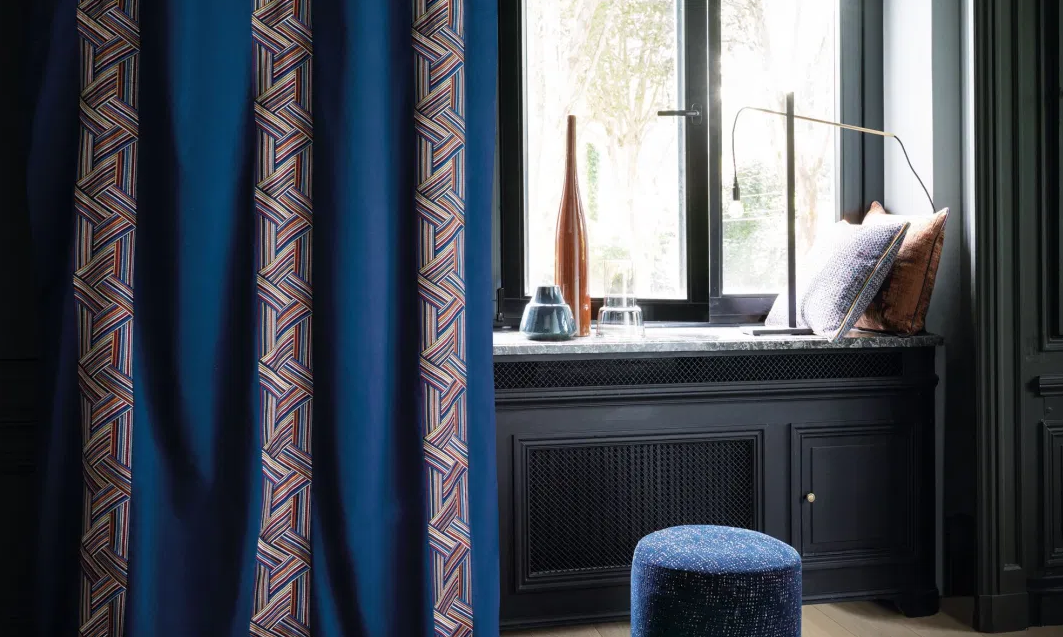
 Loading…
Loading…
Are you sure? Deleting this message permanently removes it from the Neighbourly website.
 Loading…
Loading…

 Enquiries Over $819,000
Enquiries Over $819,000



 Marketed by Louise Allen
Marketed by Louise Allen
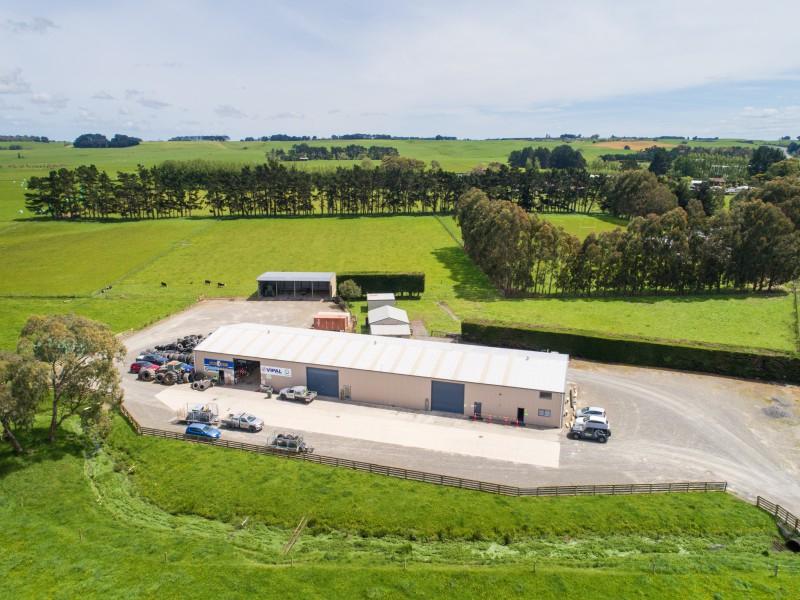
 Deadline Sale
Deadline Sale



 Marketed by Kay Nitschke
Marketed by Kay Nitschke

 By Negotiation
By Negotiation

 Marketed by Kevin Carian
Marketed by Kevin Carian

 By Negotiation
By Negotiation



 Marketed by Andrea O'Donnell
Marketed by Andrea O'Donnell

 Buyers $978,000+
Buyers $978,000+



 Marketed by Kay Nitschke
Marketed by Kay Nitschke

 By Negotiation
By Negotiation



 Marketed by Eileen Farquhar AREINZ
Marketed by Eileen Farquhar AREINZ

 Buyers $765,000+
Buyers $765,000+



 Marketed by Taylor Quine
Marketed by Taylor Quine

 Buyers $849,000+
Buyers $849,000+



 Marketed by Jo Davenport
Marketed by Jo Davenport

 Buyers $889,000+
Buyers $889,000+



 Marketed by Blair Alabaster
Marketed by Blair Alabaster
© Neighbourly 2025
